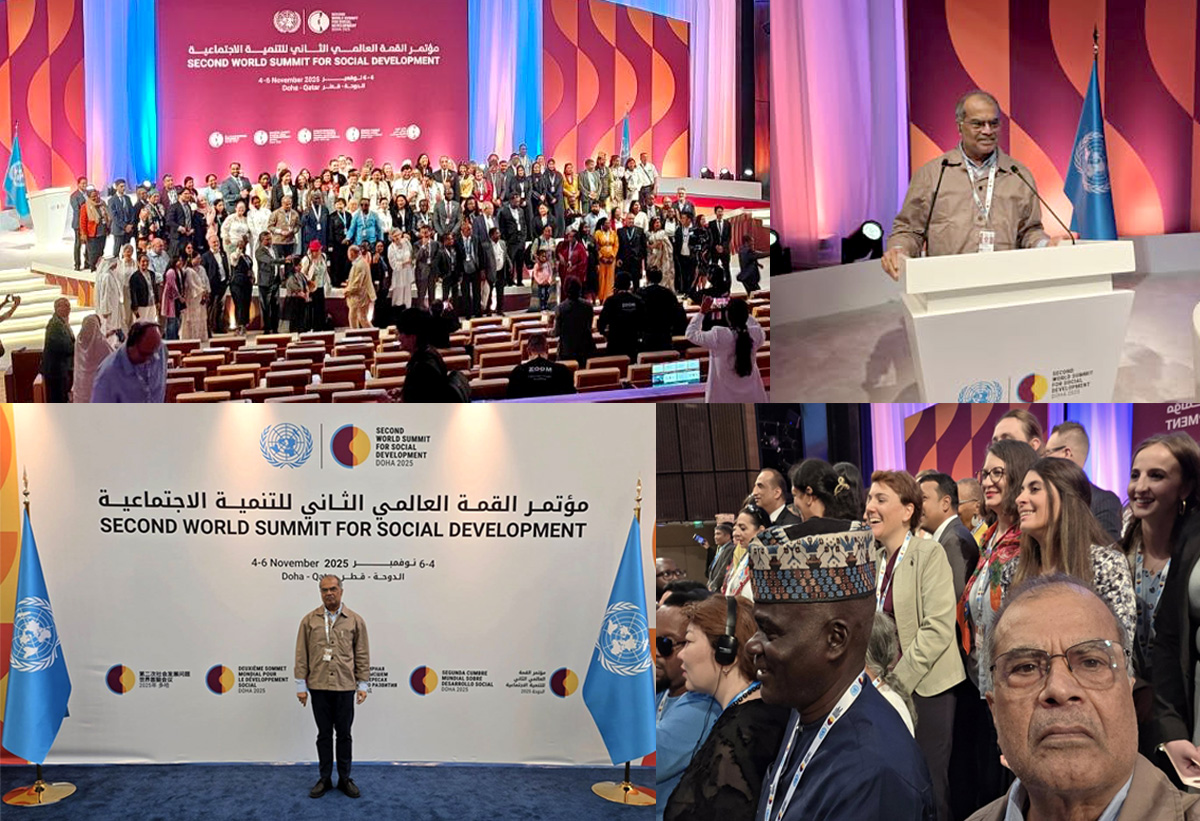Rezaul Karim Chowdhury
Published:2025-11-07 16:01:58 BdST
2nd UN World Social Summit concluded with a commitment toward social protection
Today, 7 November 2025, was the last day of the UN Second World Social Summit (WSSD2). WSSD2 expressed commitment toward Universal Social Protection.
I have participated in the concluding session of the civil society forum, participated in different sessions, especially on social protection (in our country, we say it as Safety Net or social security).
I tried to explain some issues related to the introduction on Toward Universal Social Protection issue, in the future, I will request my friends/colleagues to study on the issue and if possible, try to develop campaign in positive engagement with political forces. At present, our government spends around 19 to 23 % budget on safety net programs.
As it has been stated in one ESCAP publication, universal social protection (USP) defines USP refers to unconditional income transfers that protect the financial security of every individual, when they require it during key life cycle and labor market contingencies.
When considering these as floor then there is four broad components, i.e., health (health services, maternity), Children (Childhood), working-age adults (sickness, unemployment, maternity, disability, workplace injury), and Older persons (old age, survivorship). In brackets, I tried to address the life cycle contingencies.
Here, I would like to state some principles in this regard:
(1) The individual, not the household, is defined as the primary rights holder and beneficiary of social protection
(2) Eligibility criteria must be simple and objective and designed to verify the experience of a life cycle or labor market contingency
(3) Income transfer should seek primarily to prevent poverty by addressing common risks, thereby reducing the need for reactive, last-resort transfers
(4) Basic income transfers designed to address life cycle must be unconditional.
There are four stages in means testing versus universality from Least Inclusive to Most Inclusive, these are
> Poverty Targeted (only those observed and classified as poorest receiving benefit)
> Affluence tested (all but those in the highest wealth/income groups receive benefit)
> Benefit tested (only those who do not qualify for social insurance receive benefit, can form part of universal benefit system when carefully combined with contributory benefits)
> Universal (everyone experiencing lifecycle contingency receives benefit, regardless of means)
Unauthorized use or reproduction of The Finance Today content for commercial purposes is strictly prohibited.


